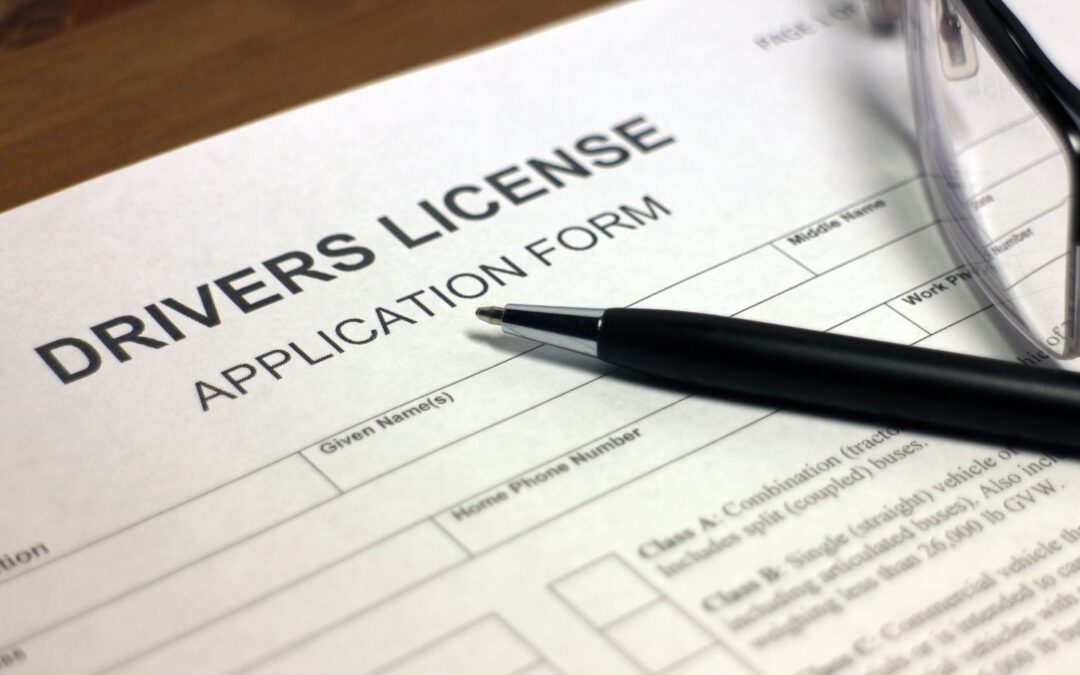Preparing Teens for a Lifetime of Safe Driving
Helping teens learn to drive is an exciting milestone, but it comes with unique challenges. Parents play a vital role in guiding their teens to become safe, responsible drivers, especially in a busy city like Austin. Texas’s Graduated Driver Licensing (GDL) system is designed to support parents and teens in building safe driving habits over time, and Austin driving schools can provide essential resources, including drivers ed programs, to complement parental guidance and ensure teens are prepared for the road.
A Structured Path to Safe Driving
This roadmap provides a comprehensive overview of each GDL stage and shares valuable tips for parents on how to make their teen’s journey from driving permit to drivers license both safe and successful. By combining personal guidance with professional driving education, you can equip your teen with the skills they need to drive safely and confidently.
Understanding Texas’ Graduated Driver Licensing (GDL) System
What is the GDL System?
The Texas GDL system is a structured approach that gradually allows young drivers to gain the experience needed to become confident and capable on the road. This system includes a series of stages that prioritize safety and skill-building.
Stage 1: The Learner’s Permit
The learner’s permit is the first step. Teens can apply for it at age 15, provided they’ve completed a drivers education course. With a learner’s permit, teens can start supervised driving practice with a parent or instructor. The Texas Department of Public Safety requires teens to log 30 hours of practice driving, including 10 hours at night, to progress to the next stage. Texas Department of Public Safety provides full details on these requirements.
Developing Basic Driving Skills
During this phase, teens focus on basic driving skills behind the wheel, like steering, braking, and following traffic rules. Parents should guide their teens in these areas, ensuring they understand safe speed limits, stopping distances, and lane discipline. Starting with these basics builds a solid foundation for more advanced skills down the line.
Stage 2: The Provisional License
After holding the learner’s permit for at least six months and completing the required practice hours, teens can apply for a provisional license. This license allows for more independence but includes certain restrictions, such as a curfew and limits on the number of passengers.
Understanding the Road Test Requirement
To progress to the provisional license, teens must pass a driving test that evaluates their ability to drive safely and confidently. This test assesses various essential skills, ensuring that teens can handle driving independently.
Building on Basic Skills
The provisional phase is designed to help teens transition from basic to more complex driving scenarios, such as driving in high-traffic areas or at night. This gradual increase in complexity prepares them to handle Austin’s varied road conditions and busy streets.
Stage 3: The Full License
At age 18, teens who have held a provisional license without incidents can apply for a full, unrestricted license. By this stage, they should feel confident handling complex driving situations, including navigating Austin’s busy traffic areas and longer highway drives.
The Benefits of the GDL System
The Texas GDL program promotes a progressive mastery of driving skills, allowing teens to gradually gain the experience they need to drive safely and confidently. The system is designed to reduce accidents and improve road safety by building a foundation of safe driving habits.
The Value of Practice During the Permit Stage
Making the Most of Permit Practice
The learner’s permit phase is primarily about practice. Parents play a key role in guiding their teens by creating varied and realistic driving experiences. The goal is to build both skill and confidence, ensuring a positive driving experience.
Start in Low-Traffic Areas
When teens first get their learner’s permit, it’s best to begin in parking lots or low-traffic areas. In Austin, Zilker Park’s parking areas during off-peak hours provide safe and open spaces ideal for initial practice. Practicing basic maneuvers, like turning, stopping, and parking, in these environments helps teens gain comfort with vehicle control.
Gradually Expand to More Complex Situations
After your teen has mastered the basics, start introducing them to different driving environments. Try residential neighborhoods, urban streets, highways, and rural roads to expose them to a variety of situations. This gradual exposure helps teens develop the adaptability they’ll need for independent driving.
Teach Specific Situational Skills
Practicing specific skills, like navigating four-way stops, changing lanes, or merging onto highways, will give teens the experience they need to handle real-world conditions. Don’t forget to practice at night and in different weather conditions, like rain, to ensure they are prepared for any situation.
Consider Enrolling in a Professional Driving School
Certified driving instructors provide structured lessons that complement parental guidance.

These lessons include core maneuvers, like parallel parking and defensive driving techniques, which are crucial in a city like Austin.
The Role of Professional Driving Schools
Professional driving schools follow a structured curriculum, making it easier for teens to learn skills that are difficult to replicate in family-led sessions. Instructors focus on defensive driving, managing blind spots, and following local traffic rules, ensuring teens build habits that will keep them safe on Austin’s busy roads.
Austin’s Road Test Preparation Services
Driving schools in Austin often offer dedicated road test preparation, helping teens become familiar with the specific requirements and skills they’ll need to pass their test. These services include mock tests and targeted lessons on areas where teens may struggle, giving them a valuable edge.
Preparing for the Provisional License Test
Core Skills for Success
The Texas road test for a provisional license assesses a teen’s ability to perform critical driving tasks, such as parallel parking, lane changes, signaling, and mirror checks. Teens should practice these skills repeatedly until they feel confident.
Simulate the Test with a Certified Instructor
Professional driving schools offer driving exam preparation that mimics the real test. Instructors understand the test’s requirements and simulate these conditions, giving teens the chance to practice in real-world scenarios. With an instructor’s guidance, teens can address difficult areas like navigating high-traffic intersections.
Safe Driving Habits to Emphasize
Beyond specific test skills, it’s important to reinforce safe driving behaviors, like defensive driving, maintaining a safe following distance, and adapting to weather conditions. Professional lessons emphasize these critical habits, ensuring teens don’t just pass the test but also develop long-term safe driving skills.
The Impact of Professional Lessons on Safety
Research shows that teens who receive professional driving instruction are better prepared for independent driving. According to the National Safety Council, professionally trained teens are statistically less likely to be involved in accidents.
Safe Driving Skills for Full License Readiness
Mastering Defensive Driving Techniques
Defensive driving is critical, especially in a busy city like Austin. Teach teens to anticipate other drivers’ actions, maintain a safe following distance, and be prepared to react quickly. These skills are essential for avoiding accidents in unpredictable traffic.
Handling Austin’s Diverse Road Test Conditions
Austin has a mix of traffic conditions, from dense city streets to expansive highways. Practicing on high-traffic roads, highways, and even rural areas will help teens become adaptable drivers capable of handling complex environments.
Preparing for Adverse Weather Conditions
Austin’s weather can change rapidly, with rain and fog common occurrences. Teens should learn how to adjust their driving, such as by reducing speed and increasing following distances. Some Austin driving schools can simulate these conditions, ensuring teens know how to handle inclement weather.
Developing Situational Awareness
In the final phase before a full license, teens should focus on situational awareness. Teaching them to read traffic patterns, anticipate potential issues, and make safe decisions will prepare them for independent driving.
Reinforcing Skills with Professional Instruction
Professional driving lessons can reinforce these skills, giving teens a thorough foundation for handling any situation they might encounter on the road. Structured lessons provide an added level of safety, ensuring teens are fully prepared for the responsibilities of a full driver’s license.
Supporting Your Teen’s Road to Independence
Helping teens progress from a learner’s permit to a full license is a rewarding journey that requires patience, structure, and guidance. Each stage of the GDL program provides a unique opportunity to build critical skills and confidence.
The Role of Parental Support
Parents play a vital role in this journey by providing practice opportunities, reinforcing safe driving habits, and offering encouragement. A supportive environment allows teens to gain confidence and become safe, capable drivers.
The Impact of Professional Driving Schools
Certified driving instructors offer structured lessons that enhance teens’ driving skills, build confidence, and promote safe driving habits.

Partnering with a driving school provides teens with professional guidance, preparing them for Austin’s roads and beyond.
Building a Safe Future Together
Combining parental support with professional training is one of the best ways to help your teen become a responsible, safe driver. Not only does this approach benefit your teen, but it also contributes to making Austin’s roads safer for everyone.
Jessica has a flair for writing engaging blogs and articles. She enjoys reading and learning new things which enables her to write different topics and fields with ease. She also strives to break down complex concepts and make them easy for anybody to comprehend.





